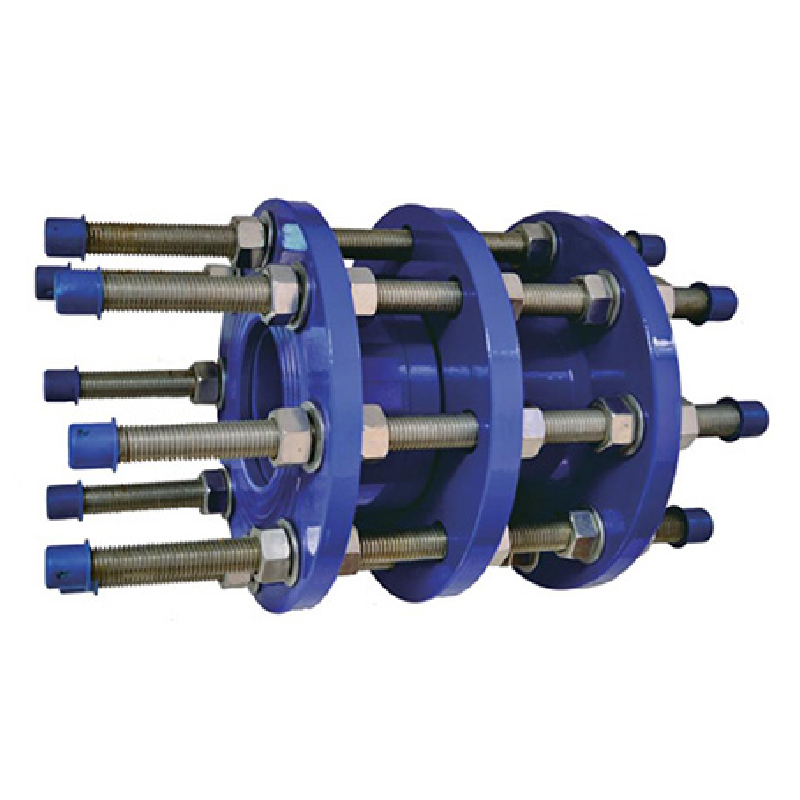Nov . 15, 2024 07:53 Back to list
socket end resilinet seat gate valve
Introduction to Socket End Resilient Seat Gate Valves
Gate valves are a fundamental component in fluid control systems, widely used across various industries for their efficiency in managing the flow of liquids and gases. Among the many types of gate valves, the socket end resilient seat gate valve stands out due to its unique design and functional benefits. This article explores the features, advantages, applications, and maintenance considerations of this particular type of gate valve.
What is a Socket End Resilient Seat Gate Valve?
A socket end resilient seat gate valve consists of a valve body, a gate (or disc), and a resilient seat, typically made of rubber or another elastomeric material. The socket end refers to the design of the valve's inlet and outlet, which are crafted to fit securely into corresponding pipe fittings. This ensures a tight seal, minimizes flow turbulence, and reduces the risk of leaks.
The resilient seat significantly enhances the valve's ability to provide a leak-tight seal when closed. The valve operates by lifting the gate out of the flow path, allowing for unobstructed fluid movement. When closed, the gate presses against the resilient seat, creating a tight barrier against the flow.
Key Features
1. Design Flexibility The socket end design allows for easy installation and replacement within existing piping systems without the need for extensive modifications. The smooth transition between the valve and the pipes helps maintain consistent fluid flow.
2. Leak Protection The resilient seat ensures that the valve can withstand pressure without leaking, making it suitable for a variety of applications where fluid containment is critical.
3. Durability Constructed from high-quality materials such as ductile iron or stainless steel, these valves are built to endure high pressures and temperatures, as well as corrosive environments.
4. Low Operating Torque The design of the gate and the resilient seat allows for low torque operation, enabling easier opening and closing, which is especially beneficial in larger valve sizes.
5. Versatile Size Range Socket end resilient seat gate valves are available in various sizes, making them adaptable for different applications, from residential plumbing to large industrial systems.
Advantages
- Flow Efficiency When fully open, gate valves have minimal flow resistance, allowing fluids to pass through freely. This feature is particularly important in applications that require high flow rates.
- Maintenance Friendly These valves are generally easy to maintain and can often be serviced without being removed from the pipeline, allowing for quick repairs and reducing downtime.
- Cost-Effective With their durability and ease of installation, socket end resilient seat gate valves represent a cost-effective solution for fluid control, minimizing both material and labor costs over time.
socket end resilinet seat gate valve

Applications
Socket end resilient seat gate valves find applications in various industries, including
- Water Supply Systems They are commonly used in municipal water distribution networks to control the flow and pressure of drinking water.
- Wastewater Management These valves help regulate the flow in sewage systems and treatment plants.
- Agriculture In irrigation systems, these valves assist in managing water flow for agricultural applications.
- Industrial Processes They are utilized in manufacturing and processing plants to control the flow of various liquids in chemical processing or cooling applications.
Maintenance Considerations
To ensure longevity and optimal performance, regular maintenance of socket end resilient seat gate valves is essential. Here are some considerations
- Inspection Regularly inspect the valve for signs of wear, leaks, or damage to the resilient seat. This will help identify potential issues before they escalate.
- Cleaning Ensure that the valve body and surrounding area are kept clean to prevent the buildup of debris, which could affect the valve's operation.
- Lubrication For manual operating mechanisms, periodic lubrication can help maintain smooth operation.
- Testing Perform pressure tests periodically to check for leaks and verify that the valve seals properly when closed.
Conclusion
In summary, socket end resilient seat gate valves represent a reliable solution for various fluid control applications. With their unique design, durability, and efficiency, they offer significant advantages over other types of valves. Understanding their features, benefits, and maintenance requirements can help industries optimize their operations while ensuring safe and effective fluid management. Whether in residential plumbing or large-scale industrial systems, these valves play a crucial role in ensuring the smooth flow of essential resources.
Share
-
Reliable Wafer Type Butterfly Valves for Every IndustryNewsJul.25,2025
-
Reliable Flow Control Begins with the Right Ball Check ValveNewsJul.25,2025
-
Precision Flow Control Starts with Quality ValvesNewsJul.25,2025
-
Industrial Flow Control ReliabilityNewsJul.25,2025
-
Engineered for Efficiency Gate Valves That Power Industrial PerformanceNewsJul.25,2025
-
Empowering Infrastructure Through Quality ManufacturingNewsJul.25,2025